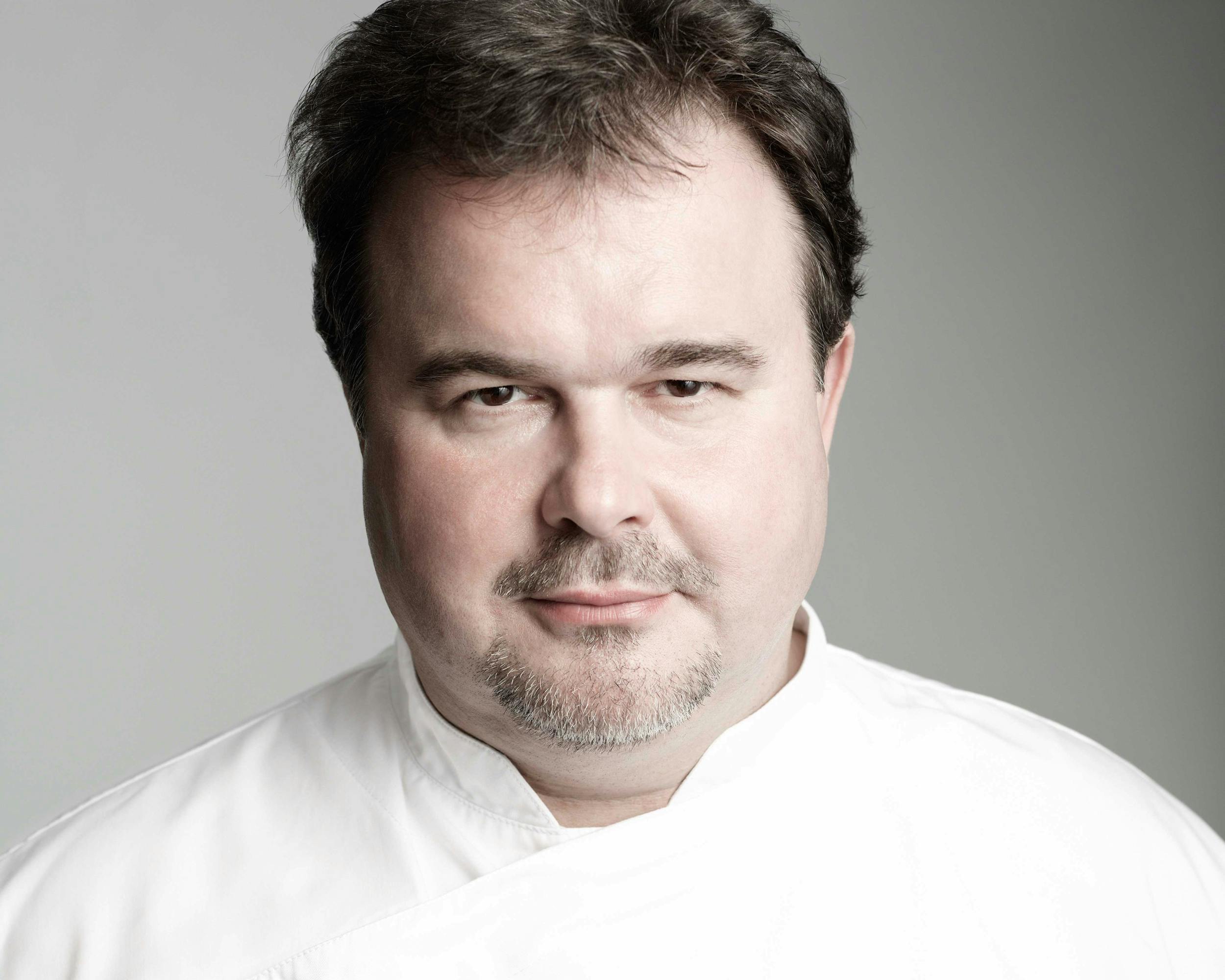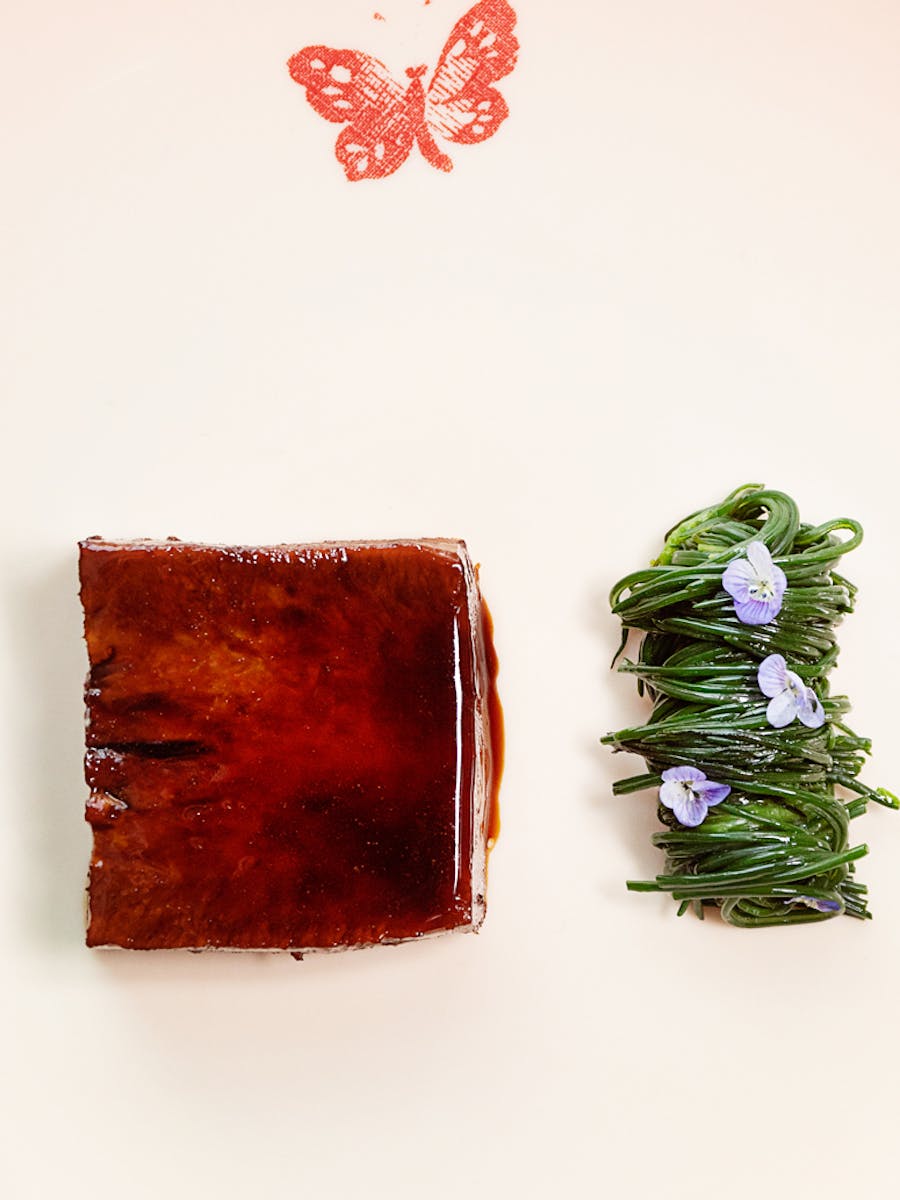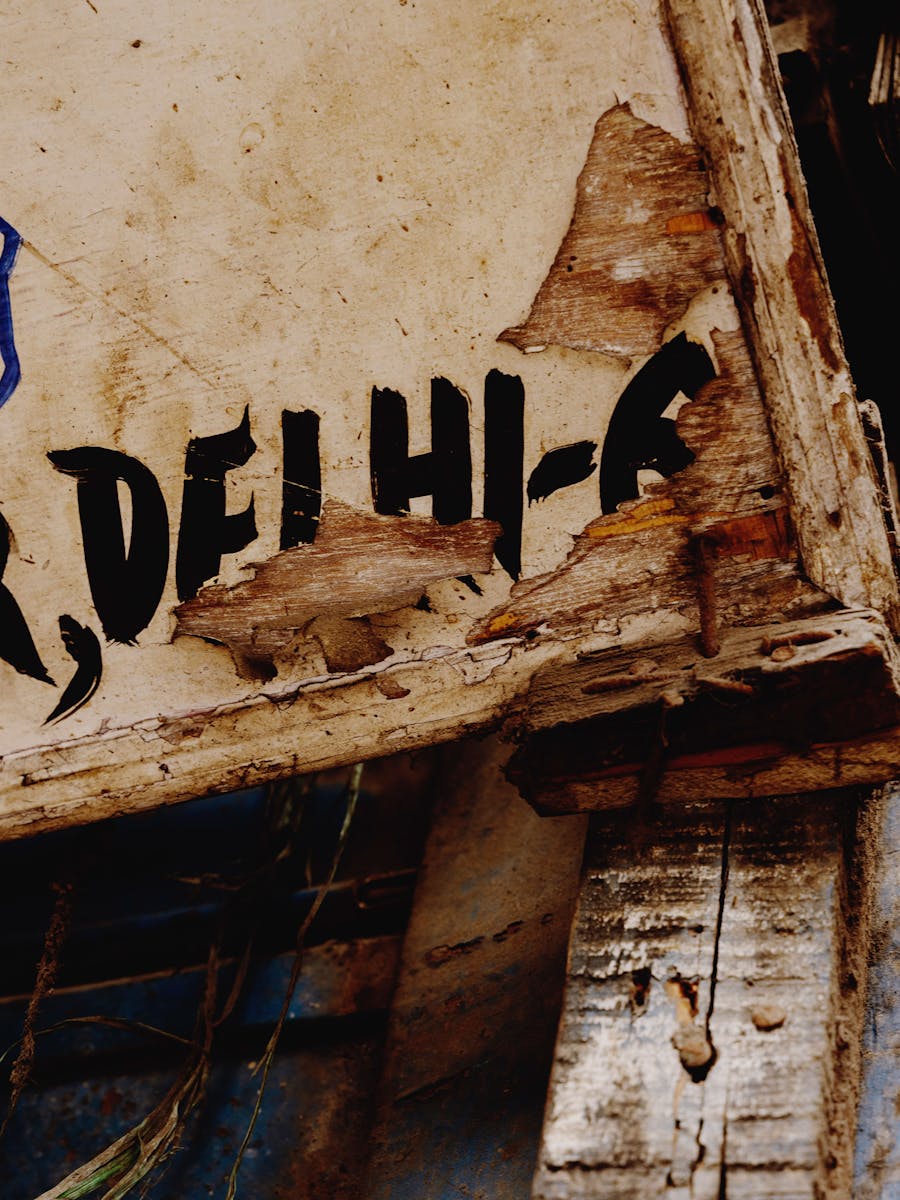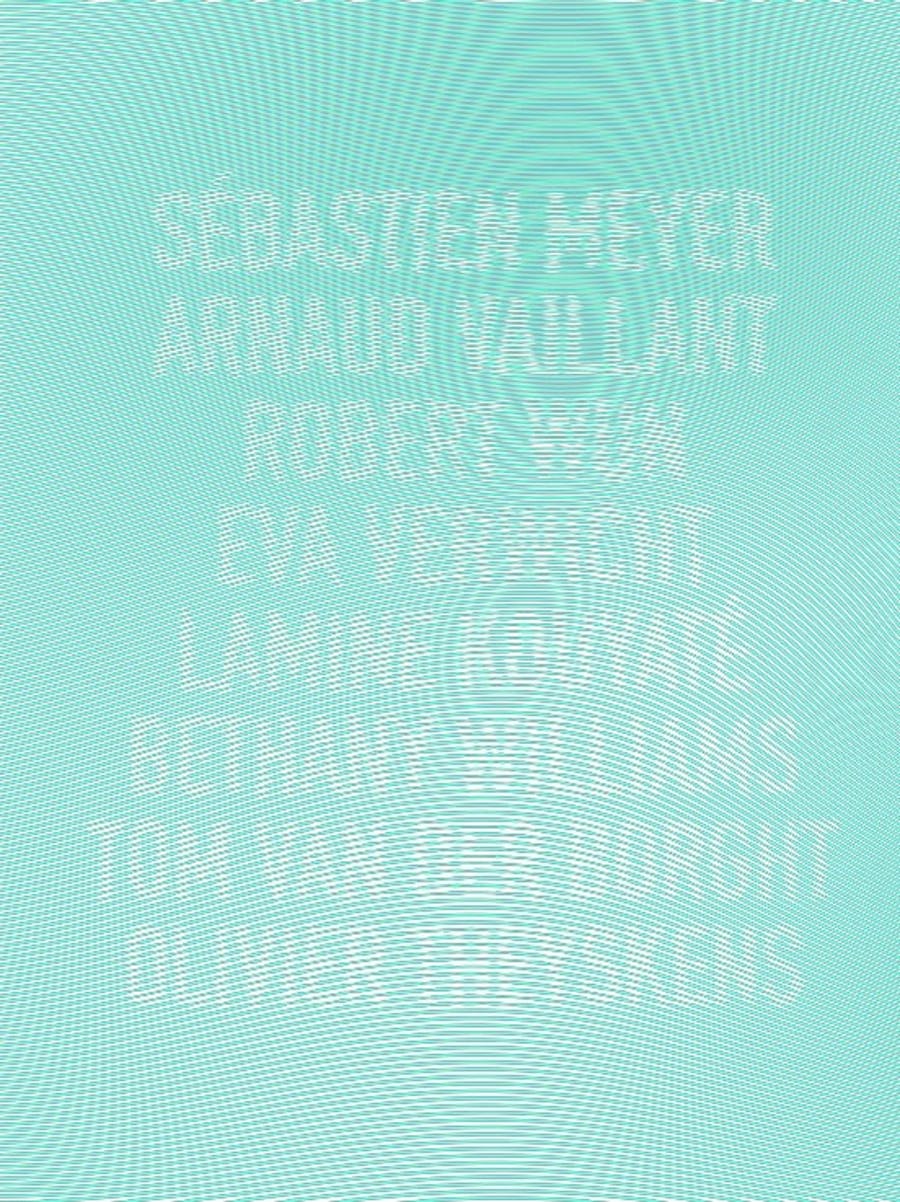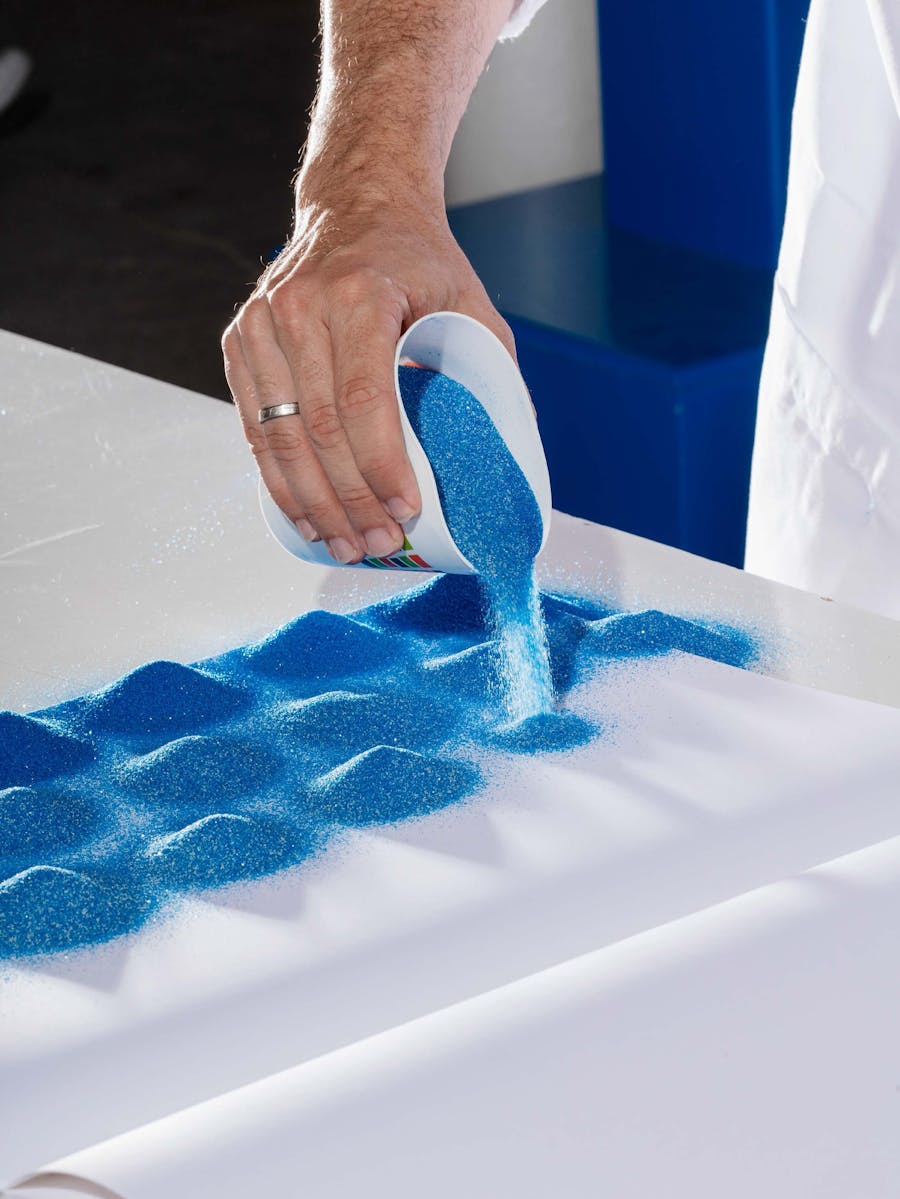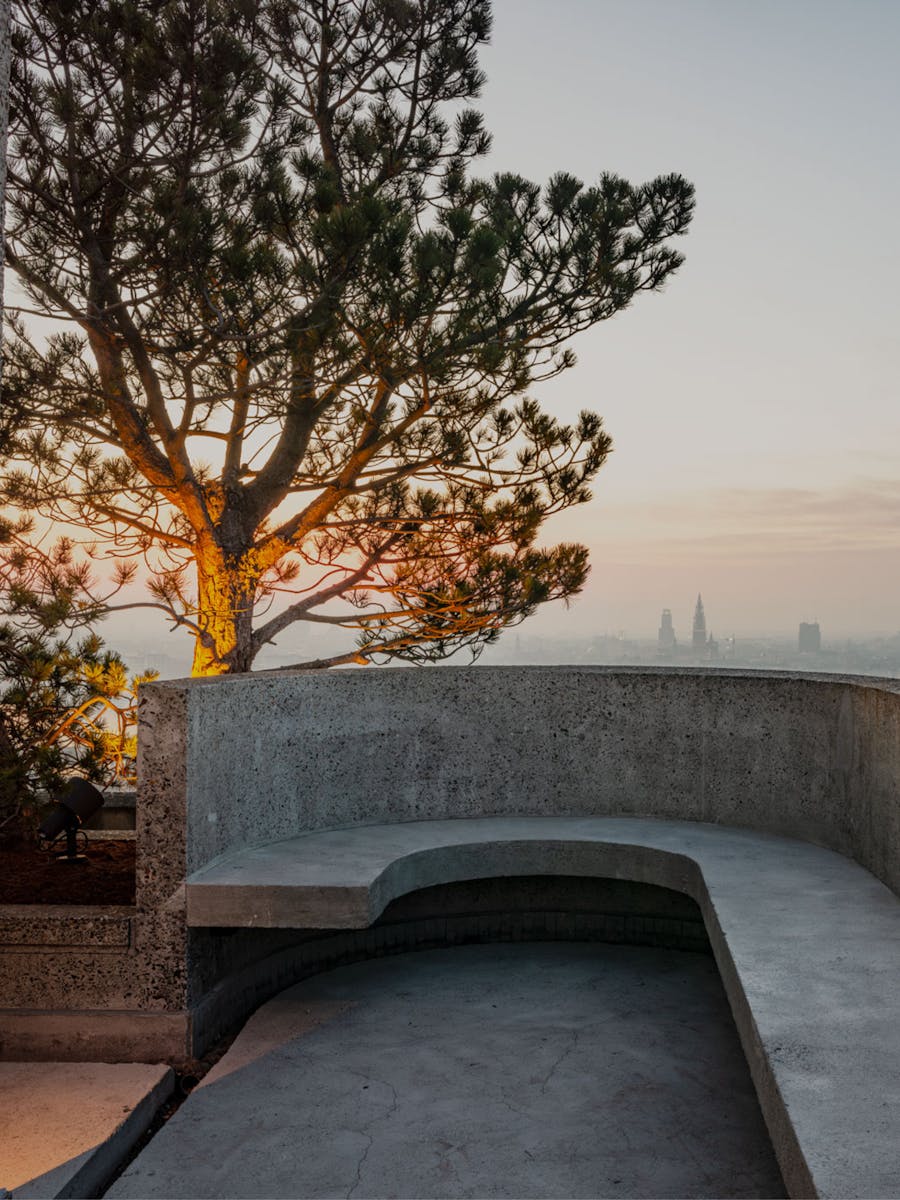Pierre Hermé is sweet
De la coupe aux lèvres… lipstick traces as they appear on a cheek, on champagne flutes or on napkins have been starring in famous novels and films forever.
So what can we say when the perfect drawing of a delicate and well-helmed mouth reminds us of the shape of a macaroon? What can we say when an explosive mouth with shiny red lipstick mixes with the chocolate of the fondant? Only Pierre Hermé might be able to answer.
Pierre Hermé is sweet—as sweet as his extremely delicate pastries.
At 49, there is still about him this exquisite sense of roundness, like a tribute to his world-renowned macaroons. Above all, he achieves perfect balance with a dash of fragility, somewhere between peace and doubt, the pleasure of creation and the discipline of production.
Obviously, pastries must taste good, but why not attempt perfection? It’s not hard to imagine that Pierre sensed this truth from the day he was born, in Colmar in Alsace, where he became the fourth generation in a line of pastry chefs.
His father was his first pastry teacher. Pierre Hermé was particularly receptive but he had something more—he was creative.
His father and mother understood this and let their little boy of 14 answer an ad in a local paper, Des Dernières Nouvelles d’Alsace: Gaston Lenôtre was looking for an apprentice in Paris.
“I learned everything with Gaston, says Pierre. The quality of the ingredients, rigour, organization. All of these are absolutely necessary to express the creative impulse.”
At 20, Pierre would excel at Fauchon, before going on to modernize and revolutionize Ladurée, which unfortunately was not always that appreciative.
This is probably why “The King of Modern Pâtisserie” (The Guardian), the “Kitchen Empereur” (New York Times), went on to open his first shop, presenting his first “collection” in Tokyo in 1998. It was in Japan, the United States and then Paris where he began to spread his wings, while being careful not to spread himself too thin.
It’s when you actually enter his shop on the Rue Bonaparte that you truly understand what really connects Pierre Hermé to his loyal, passionate customers. His little boutique has a small window with a minimalist display. There is no “Pâtisserie” sign hanging overhead. Nothing. But it’s there. The jewels are inside, under just enough soft lighting to best compliment the warm precise colors of his macaroons and cakes.
There is a constant line of customers along the narrow sidewalk. You hear three or four languages. There are always a good thirty people waiting. Lovers, families, or on their own, they are attentive. They might have just done a Da Vinci Code tour at St. Sulpice, or they may have traveled the world to wind up here, waiting to get in while talking about their favorite flavors or the inside dope on Pierre’s latest invention.
As I’ve said, Pierre Hermé is sweet, sweet but intense. In a word, he is sensual. With Pierre, sensuality is profound, permanent, creative and poetic. You can’t help but be drawn in by the precise, sober and strong way he looks at you, his chin resting quietly in his hand. He listens, smiles, and everything about him comes to life, especially his face, and more especially his lips. They are the most expressive, even when he is not speaking.
I pointed out to him the incredible range of emotions his lips displayed, which seem to be perpetually reacting. He wasn’t surprised. “My wife Barbara often tells me that.” His lips express every emotion, including, with one crease, the conflicted memories of his years at Ladurée.
His creative process is similar to that of all great artists. Alain de Greef, a 5 Star Amateur chef, once told me that Hermé had a unique quality: he could come up with an idea and imagine exactly how it would taste when the cake was done. “The way Ellington with his eight notes could hear all the parts of a score at once for his Big Band, and Vermeer could see his entire painting before he’d even touched brush to canvas.”
Hermé expresses this as, “You have to start with an idea, formalize it. I like to write it down, formulate it, and also draw it. Then I make it. I only make marginal adjustments. Otherwise, I file it away. If it requires too much research, it’s because the idea is not good, or not yet fully formed in my head.” He’s accumulated 26 years worth of files, drawings, and pastry recipes, which he shares with collaborators who have often worked with him for years, and 30% of whom are women, a rarity in this profession.
Sensitivity is everything. Sensitivity and knowledge are his key words. He speaks with nuanced precision about his macaroons. “The macaroon is always eaten in two bites. In between, we want the customer to have the extra pleasure of contemplating both the crisp shell and the flavors inside the shell.” His lips add, “In fact, it’s more a matter instinct than research. Always.”
And when I asked him whose lips were his favorite, Pierre Hermé talked about Simone Signoret’s in Casque d’Or. “Her lips said so much, the words and eyes just added the finishing touches.” As someone once said, “May only sweet moments last.” Pierre Hermé dares to try every day. With as many flavors as possible. In sweet harmony.
